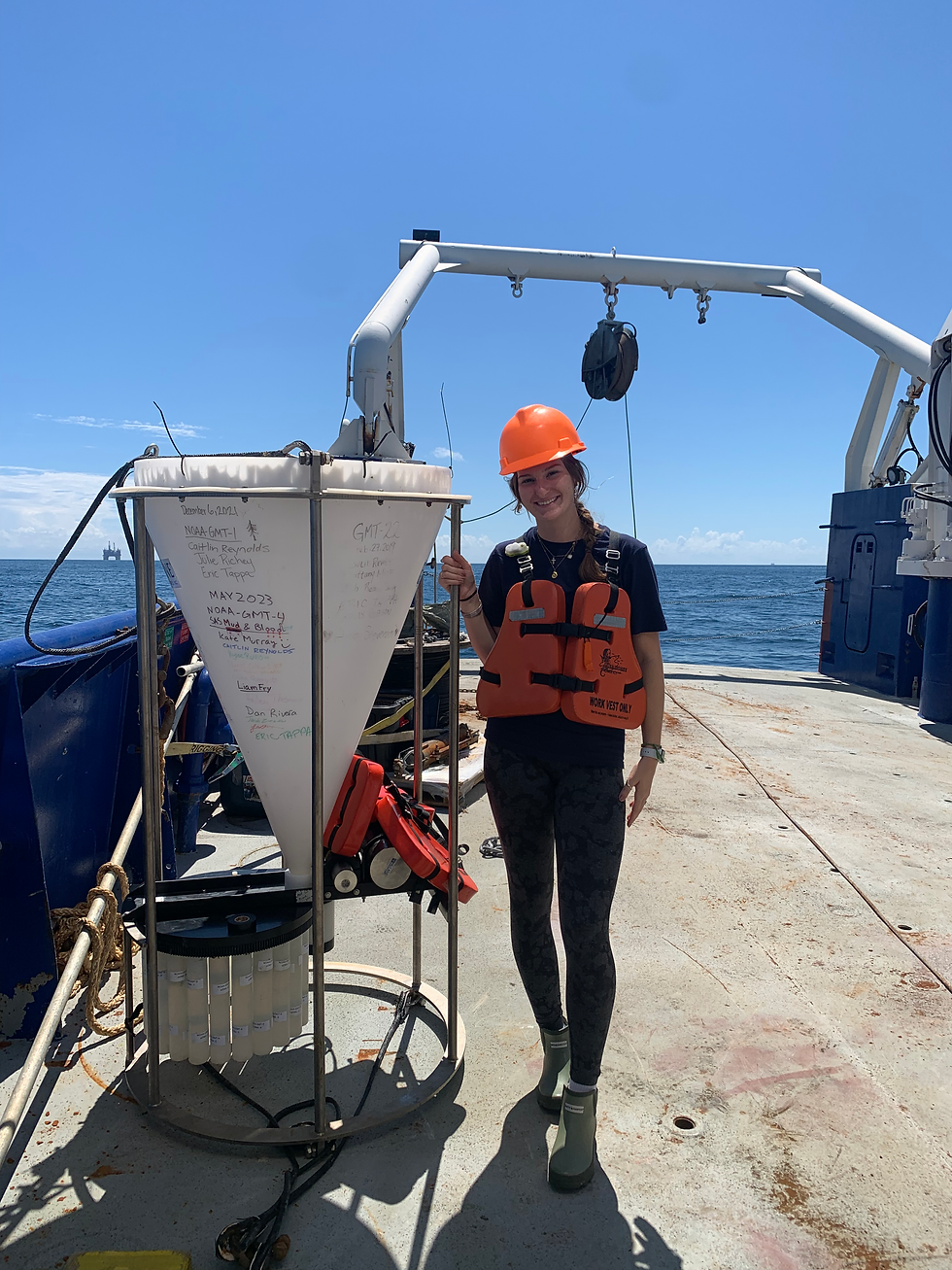Sediment Trap Collection and Redeployment
- Rosalie K. Cruikshank
- Oct 15, 2024
- 2 min read
In September 2024, I successfully conducted another sediment trap collection and redeployment on board the RV Pelican from LUMCON. This research cruise was part of my responsibilities as a contractor at the U.S. Geological Survey (USGS), where I am a member of the "Corals and Paleoclimate" team at the St. Petersburg Coastal and Marine Science Center.

A sediment trap is a cone-shaped device designed to collect falling material, or sediment, when placed in water. Positioned in the northern Gulf of Mexico within the water column, this specific location was chosen due to the limited research conducted in the area. While there is substantial knowledge about ocean surface phenomena, and now on benthic communities at the seafloor, there is still little known about the area in between. The objective is to bridge the existing knowledge gap and understand the mechanisms of material transport, or flux, from the sea surface to the sea floor. Equipped with rotating cups that collect samples every 7 to 14 days, the sediment trap is a crucial tool for this research.
This trap has been previously utilized by the US Geological Survey (USGS) for climate and ocean productivity studies, and has a rich history of data collection dating back to 2008. Last summer, I had the opportunity to work with this extensive dataset to create a long-term composition analysis, essential for monitoring seasonal variations and establishing a baseline for future environmental studies. Recently, the National Oceanic and Atmospheric Administration (NOAA) has employed our sediment traps to study environmental DNA (eDNA) and monitor aquatic organisms. By collecting data over multiple years, these efforts aim to track the stability or changes in oceanic communities at the specific depth where the sediment trap is deployed.
The project I am currently engaged in involves utilizing the sediment trap samples to quantify microplastics sinking in the Gulf of Mexico. Through the identification of plastic polymers, we aim to potentially determine the sources of this material. The development and implementation of methodologies for this project have been a challenging journey marked by various setbacks. Nevertheless, it is important to acknowledge that even failures contribute to our progress in discerning successful approaches.
My involvement in this project has been immensely rewarding, presenting numerous valuable opportunities. I eagerly anticipate the future prospects and growth that this endeavor will continue to offer.

Stay tuned to see what comes of these projects in the future :)















Love it, excited to hear what you find in your research!!